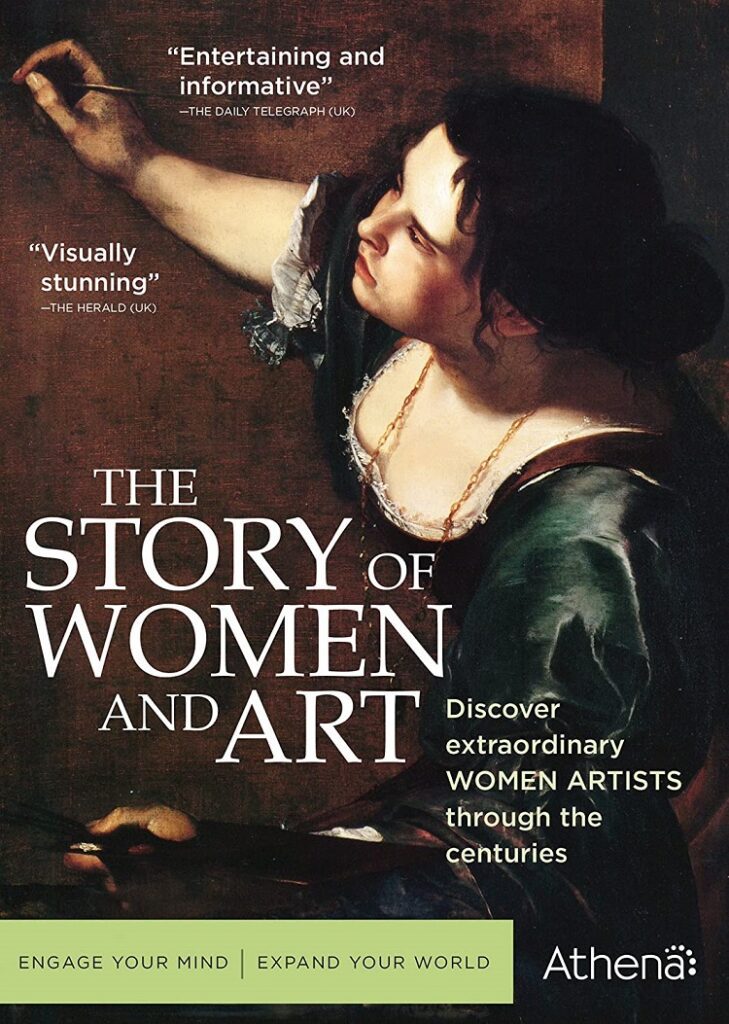
Art historian and host Amanda Vickery (professor of early modern history at Queen Mary University of London) poses a question at the start of her series The Story of Women and Art: Women as muses and artists’ models line countless gallery and museum walls – in sculptures and paintings made by male “old masters” – but where are all of the female artists?
In three one-hour episodes, Vickery travels the world to try to highlight some of the unknown heroines of art history. In the first episode, Vickery travels through Italy and Holland to showcase the work of 16th and 17th century artists. She moves on to the 18th century and Britain and France in the second episode, and the 19th and 20th century, hopping from Europe to America. Viewers are treated to works created over the last five centuries by some wonderfully talented women, including sculptors Properzia de Rossi and Anne Seymour Damer; and painters Sofonisba Anguissola, Lavinia Fontana, Artemisia Gentileschi, Clara Peeters, Judith Leyster, Maria Sibylla Merian, Angelica Kauffmann, Élisabeth Vigée-Lebrun, Berthe Morisot, and Georgia O’Keeffe. She addresses design, too, with textile designer Anna Maria Garthwaite, garden designer Gertrude Jekyll, and fashion designer Rose Bertin, who helped update Marie Antoinette’s style.
Acorn Media and Athena have recently released the BBC series on a single DVD disc, which includes all three episodes. SDH subtitles are available, and the widescreen episodes look great on a large-scale high-definition television screen, with an aspect ratio of 1.77:1. The entire series has an approximate running time of 186 minutes. Extras include an illustrated viewer’s guide to the series, and on disc, some previews for other Athena programs.
Vickery takes viewers along on her journey, for the most part on-site, but also, inexplicably, at times features details from artists’ works on her iPad. Not very helpful really – show us the real art. That criticism aside, she has incredible enthusiasm for her subjects and helps give insights into their lives and art. A common thread through many of the female artists’ lives, is, unsurprisingly, how they were held back both personally and professionally, by trying to work as artists in a male-dominated world. Women being able to learn anatomy and work from nude models, was a barrier to visual artists’ progress. Not all male artists were threatened by these women, however. She shares a lovely story of how painter Anthony van Dyck, a huge fan of Sofonisba Anguissola, visited her and even did a sketch of her.
Many of the paintings by women focus more on family. Vickery points out that such domestic subjects may not have been as highly valued as other subjects painted by contemporary male artists, which may have also helped to keep them out of the mainstream. One of the more compelling stories told in the series, of Artemisia Gentileschi, may be familiar to some art lovers. The daughter of artist Orazio Gentileschi, Artemisia trained with him from an early age. At the age of 18 she was raped by her teacher Agostino Tassi, who promised to marry her. Already married, he reneged on his promise and even tried to steal some of her father’s paintings. The Gentileschis accused him of rape, and Artemisia had to undergo both thumbscrews and a gynecological examination to prove her side of the story. Tassi was found guilty, but never was imprisoned. Thankfully, Artemisia was able to move on and became a quite successful painter.
Arguably, not all of these artists are considered obscure. Leyster, Morisot, and Gentileschi are quite well known, and highly considered. But the show, overall, is doing a wonderful service to tell the stories of some of these little-known artist’s lives and shine a light on their talents for all to see. Many museums in recent years have been trying to rewrite the male-heavy canon of art history, and this show is a great nudge to continue in that direction.